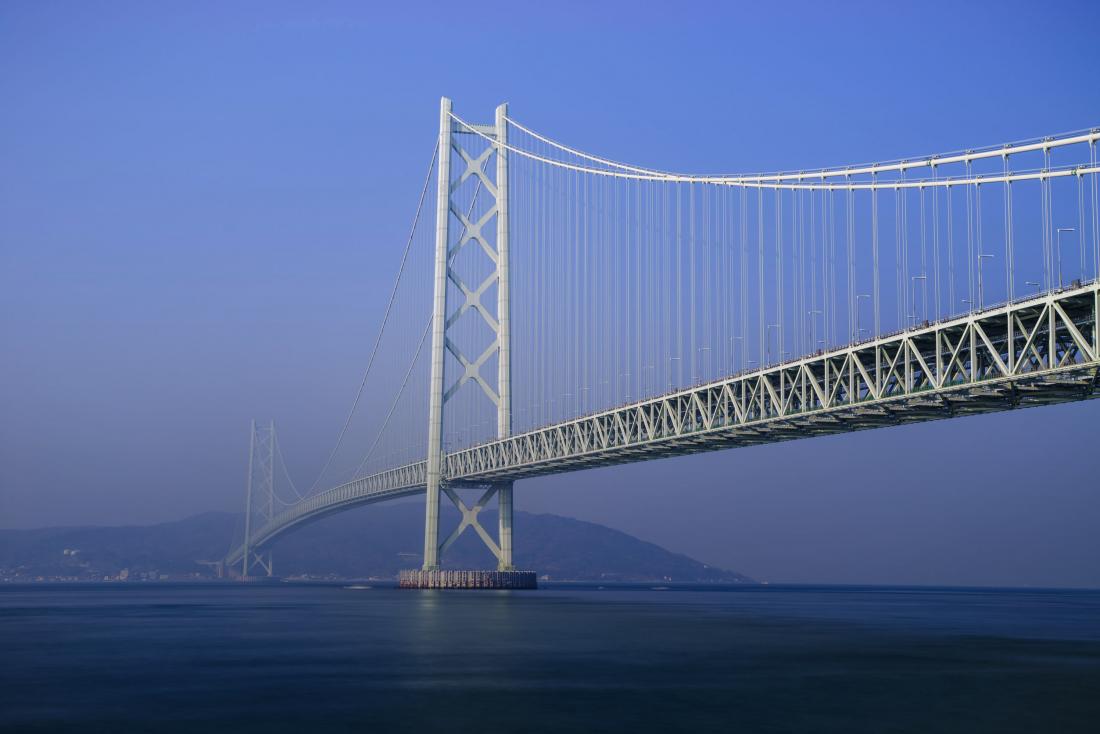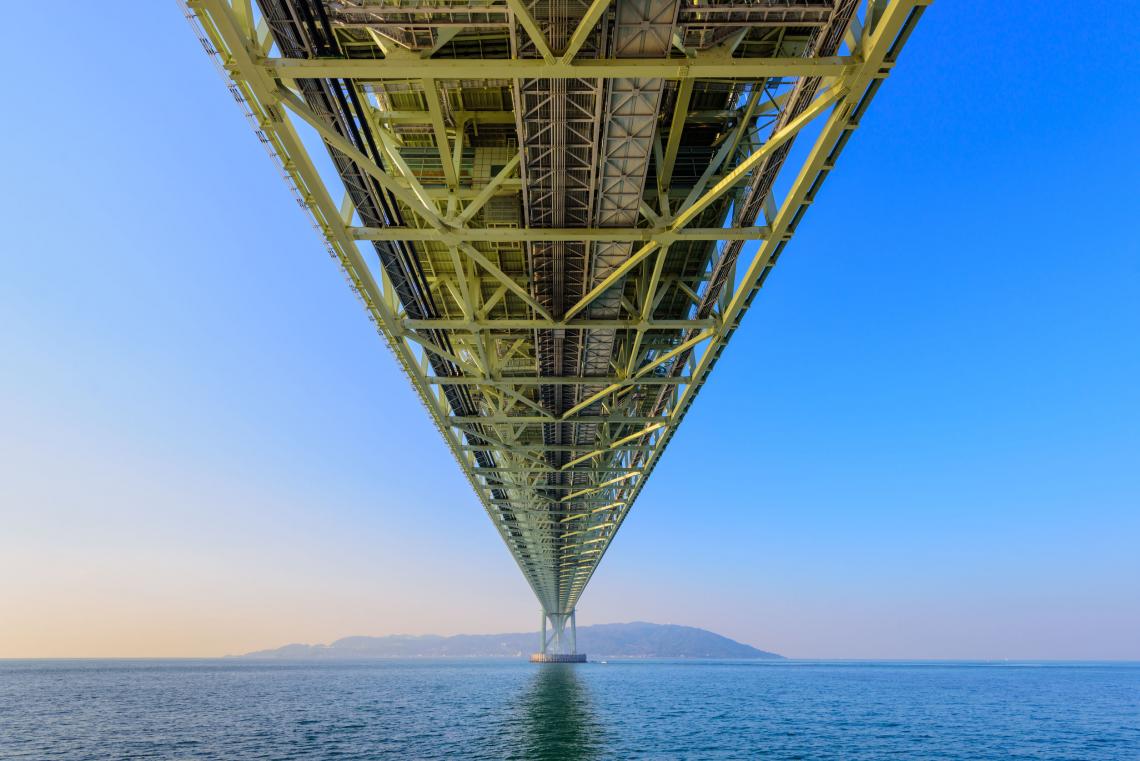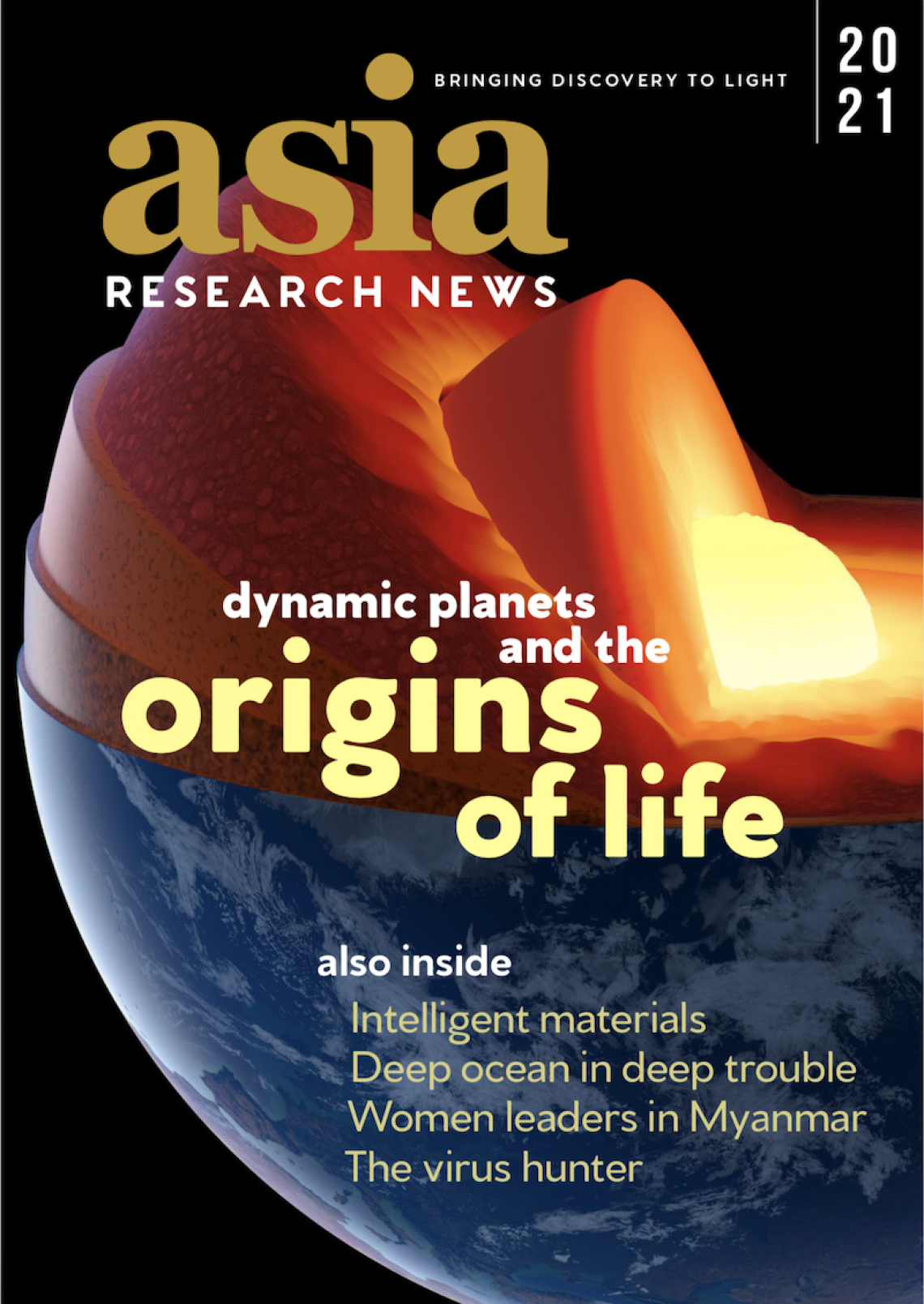Akashi Kaikyō Bridge, Kobe, Japan
This story is featured in the Asia Research News 2021 magazine. Read in ISSUU (above) or full text and images below.
Materials scientists in China report in the journal Science and Technology of Advanced Materials that machine learning algorithms can effectively predict how easily certain low-alloy steels used in bridges and other structures might corrode in coastal regions.
“The corrosion resistance of metals affects the service life and safety of engineering structures like bridges and oil platforms,” says Kewei Gao of the University of Science and Technology Beijing, who led the study. “Evaluating corrosion resistance is an important aspect of construction and new material development, but doing so in the actual environment where they will be used is expensive and time-consuming, taking more than ten years in some cases. To save time, we propose a machine learning model that can directly predict the steel’s corrosion rate on the basis of specific information, like the material’s chemical composition and the environmental conditions.”
Gao and her colleagues applied six different machine learning algorithms to data from the Corrosion Data Sheet belonging to Japan’s National Institute for Materials Science. The data is based on a variety of low-alloy steels, which contain a low percentage of certain metals, exposed at three coastal sites around Japan for one to 10 years. Eighty percent of the data was used to train their machine learning models and the remaining 20% was used to test the model’s prediction accuracy.
The scientists fed the algorithms information about the composition of 18 low-alloy steels and the effects of several environmental factors on their corrosion over varying time periods. By doing so, they were able to identify the factors with the strongest effects on corrosion. These included the composition of the metal itself, in addition to the surrounding temperature, humidity, salt deposition, the presence of combustion particles from ships, and exposure to solar radiation.
Further evaluations showed that the total content of alloying elements, such as copper, chromium, nickel, manganese, silicon or phosphorus, was always one of the most significant factors affecting corrosion rates. Also, salt deposition on the metal and local precipitation were the main factors affecting corrosion in the first three years of exposure, while local humidity was the most significant factor after five years.
Once the model learned the complex effects of the various factors on metal corrosion, the scientists used the remaining data to test its accuracy predicting the metals’ corrosion behaviour. “Our optimized model had high prediction accuracy for multiple steel samples in different environments,” says Gao.
The team next aims to apply machine learning to real-time monitoring of corrosion in coastal steel structures.
The nitty gritty of corrosion
In the early stages of corrosion, the scientists anticipate that a loose, thin layer of rust forms that is easily penetrated by chloride ions and precipitation, creating a wet, corrosive environment on the metal’s surface. After five years, the rust layer has thickened, making it difficult for chloride ions and rain to seep in. However, long-term humidity in the region helps form a corrosive microenvironment on the metal’s surface, causing corrosion to continue.
Further information
Professor Kewei Gao
[email protected]
School of Materials Science and Engineering
University of Science and Technology Beijing
Dr Yoshikazu Shinohara
[email protected]
Science and Technology of Advanced Materials
National Institute for Materials Science





